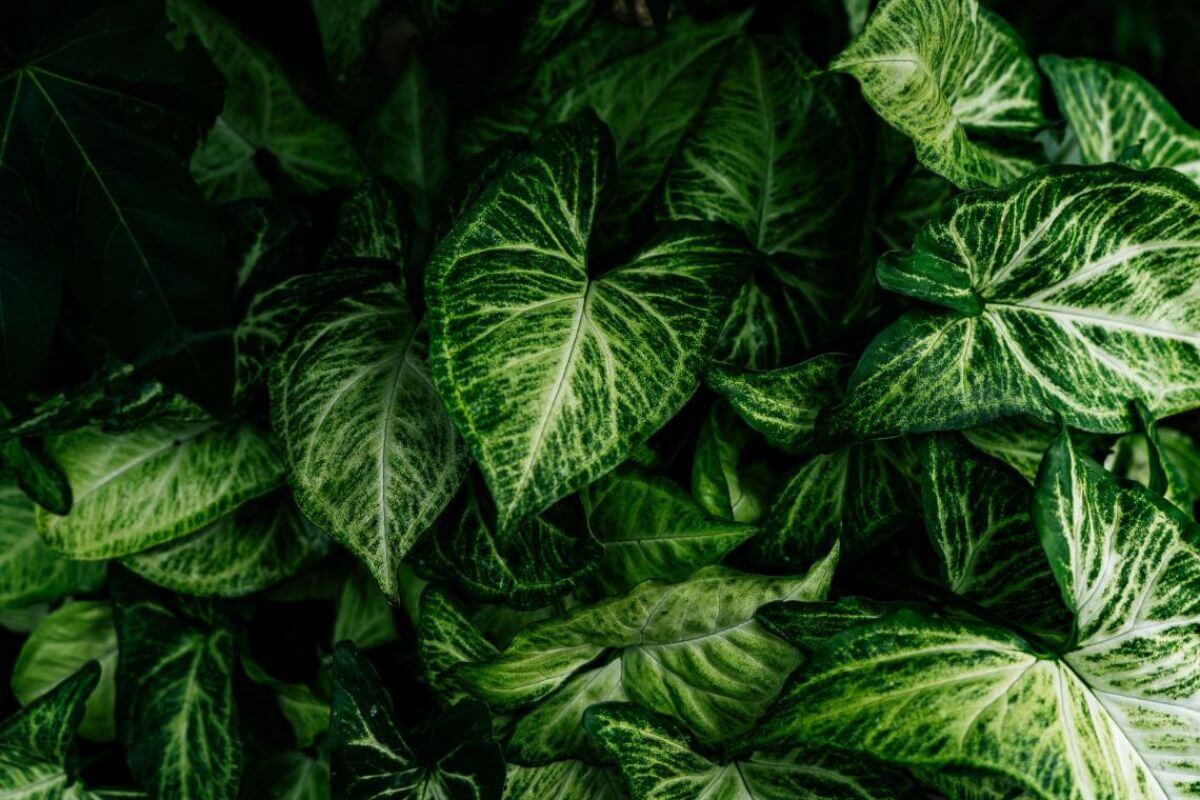Introduction
Houseplants have become a popular addition to modern homes, not only for their aesthetic appeal but also for their ability to purify the air and bring a touch of nature indoors. Two plants that often find themselves in the spotlight are Nephthytis and Syngonium. While they might look similar at first glance, there are key differences between these two plants that every indoor gardening enthusiast should know. In this article, we’ll dive into the characteristics, care requirements, and unique traits of both Nephthytis and Syngonium, helping you make an informed decision on which plant suits your home and lifestyle best.
Understanding Nephthytis
Nephthytis, scientifically known as Syngonium podophyllum, is a versatile and popular houseplant. It belongs to the Araceae family and is native to tropical regions of Central and South America. The plant features arrow-shaped leaves that display a beautiful blend of green, white, and pink hues. Nephthytis can be grown as a climbing or trailing plant, depending on how you choose to support it.
Appearance and Leaf Patterns
Nephthytis leaves have a distinctive arrowhead shape, making them easily recognizable. The leaves may vary in size and color, depending on the plant’s age and environmental conditions. Younger leaves often have more pronounced pink hues, while older leaves tend to display more green and white shades.
Growth Habits
This houseplant can thrive in both indoor and outdoor environments. Indoors, Nephthytis grows well in hanging baskets or on trellises, adding a touch of elegance to any room. Outdoors, it thrives in shaded areas with indirect sunlight.
Light and Temperature Preferences
Nephthytis prefers moderate to bright indirect light. Exposure to direct sunlight can cause leaf burn and may affect the plant’s growth adversely. Regarding temperature, the plant thrives in temperatures between 65°F to 75°F (18°C to 24°C).
Watering Needs
When it comes to watering, Nephthytis appreciates consistently moist soil. However, it’s essential to avoid overwatering, as excessive moisture can lead to root rot. Let the top inch of soil dry out before watering again.
Soil Requirements
Well-draining potting mix with added peat moss or perlite works best for Nephthytis. The soil should retain enough moisture without becoming waterlogged.
Propagation Methods
Nephthytis can be propagated through stem cuttings or division. Take a healthy stem cutting with a few leaves and nodes, and place it in water until roots develop. Alternatively, divide the plant during repotting to create new plants.
Getting to Know Syngonium
Syngonium, commonly known as Arrowhead Plant or Goosefoot, is another delightful houseplant choice. It belongs to the same Araceae family as Nephthytis and shares similar characteristics. Syngonium is native to tropical regions of Central and South America and is widely appreciated for its beautiful foliage.
Leaf Shapes and Colors
Syngonium leaves can have various shapes, ranging from arrowhead to five-lobed forms. The colors also vary, including shades of green, cream, pink, and burgundy, depending on the cultivar.

Growth Patterns
As a young plant, Syngonium displays a bushy growth habit. However, as it matures, it starts to vine, making it an ideal choice for hanging baskets or trained to climb on supports.
Light and Temperature Preferences
Syngonium thrives in medium to bright indirect light. Too little light may result in leggy growth, while too much direct sunlight can scorch the leaves. The plant prefers temperatures between 60°F to 75°F (15°C to 24°C).
Watering Requirements
Syngonium prefers a consistent watering schedule, allowing the top inch of soil to dry out before the next watering. It’s essential to keep the soil lightly moist without becoming waterlogged.
Soil Preferences
A well-draining potting mix with peat moss or perlite is suitable for Syngonium. The plant benefits from occasional fertilization during the growing season.
Propagation Techniques
Syngonium can be propagated through stem cuttings, similar to Nephthytis. Take a healthy cutting with at least two nodes and place it in water until roots form.
Comparing Nephthytis and Syngonium
While Nephthytis and Syngonium share similarities due to their common family, there are some key differences that set them apart.
Leaf Structure and Differences
The most apparent difference between the two plants lies in their leaf shapes. Nephthytis leaves typically have an arrowhead shape, whereas Syngonium leaves can vary from arrowhead to five-lobed forms. Additionally, the color patterns on the leaves differ between the two, offering unique aesthetics.
Growth Rate and Size Variations
Nephthytis tends to grow at a slower rate compared to Syngonium. However, Nephthytis can reach a larger size when provided with suitable growing conditions. Syngonium, on the other hand, remains more compact in comparison.
Care and Maintenance Comparisons
Both plants are relatively easy to care for, making them ideal choices for beginners. They thrive in similar temperature ranges and require moderate to bright indirect light. However, Nephthytis prefers slightly more moisture in the soil, while Syngonium can tolerate slight drying out between waterings.
Toxicity Levels
One essential aspect to consider when choosing a houseplant, especially if you have pets or small children, is their toxicity. Nephthytis and Syngonium are considered mildly toxic if ingested. It’s best to keep them out of reach from curious pets and children.
Choosing the Right Houseplant for You
When selecting between Nephthytis and Syngonium, consider your experience level, available space, and care capabilities.
Considerations for Beginners
Both Nephthytis and Syngonium are beginner-friendly plants, but Nephthytis may require a bit more attention due to its moisture requirements. If you’re new to indoor gardening, Syngonium could be an excellent starting point.
Ideal Environments for Nephthytis and Syngonium
Nephthytis does well in environments with moderate to high humidity levels, making it perfect for bathrooms or kitchens. Syngonium can adapt to slightly lower humidity levels, making it suitable for most indoor spaces.
Maintenance and Care Requirements
Both plants require regular watering, but Nephthytis prefers consistently moist soil. Syngonium can tolerate slight drying out between waterings. Ensure both plants receive adequate indirect light for healthy growth.
Conclusion
In conclusion, both Nephthytis and Syngonium are stunning houseplants that can add a touch of nature to your home. Their unique foliage and easy care requirements make them popular choices for indoor gardening enthusiasts. Consider your living space, care abilities, and aesthetic preferences when deciding between these two plants. Regardless of your choice, both Nephthytis and Syngonium are sure to bring joy and beauty to your living space.
FAQs
Are Nephthytis and Syngonium suitable for low-light conditions?
Both plants prefer medium to bright indirect light. While they can tolerate lower light conditions, it may affect their growth and overall appearance.
Can Nephthytis and Syngonium be placed outdoors?
Yes, these plants can thrive outdoors in shaded areas with indirect sunlight. Just make sure to protect them from harsh weather conditions.
Are Nephthytis and Syngonium pet-friendly?
Both plants are considered mildly toxic if ingested. It’s best to keep them out of reach from pets and small children.
How often should I fertilize Nephthytis and Syngonium?
Fertilize both plants during the growing season (spring and summer) every 2-4 weeks using a balanced liquid fertilizer.
Can I propagate Nephthytis and Syngonium in water?
Yes, both plants can be propagated through stem cuttings placed in water until roots develop.



